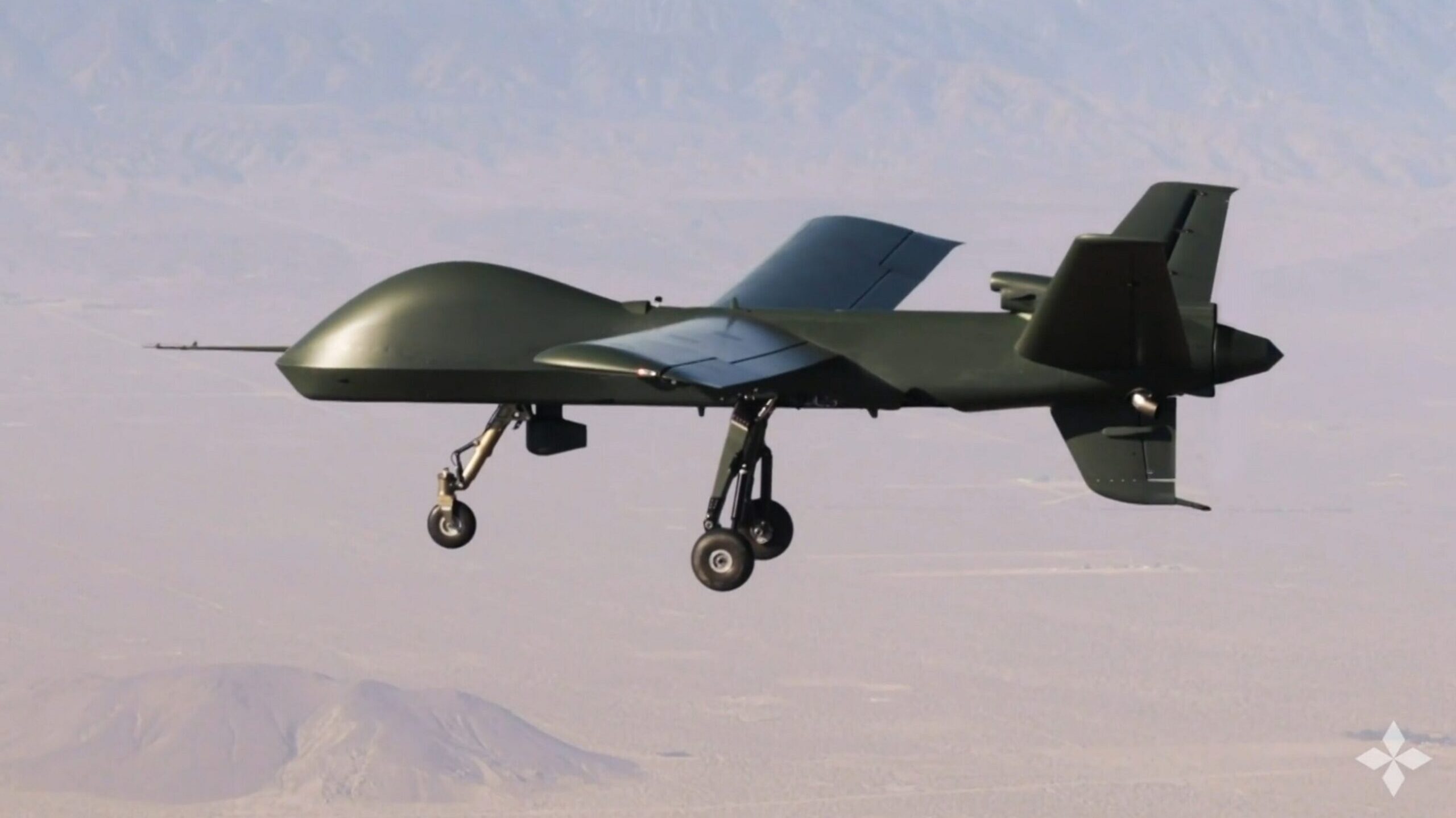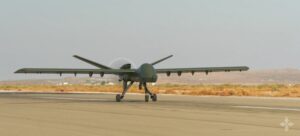
General Atomics’ new Mojave drone flies over the Mojave Desert during tests in summer 2021. (General Atomics)
WASHINGTON: With the ability to carry 16 Hellfire missiles and take off and land in a dirt road, the new Mojave drone revealed today by General Atomics is designed to perform in dirty and dangerous environments where enemies are hiding.
But first, it just needs to find a customer.
The original idea behind Mojave — officially disclosed today, about a month after Breaking Defense first reported on it — was to build a drone that special operators could take into austere conditions that had a larger payload than the company’s MQ-1C Gray Eagle used by the Army, said Dave Alexander, president of General Atomics aeronautics business.
But there’s no clear military program of record where the brand new drone fits, and, so far, US Special Operations Command has shown little interest in unmanned aircraft for its Armed Overwatch requirement to replace its U-28 Draco fleet. But that doesn’t mean General Atomics has given up on getting the Mojave involved, especially in the special ops mission set.
“We’re still pushing it. I think it‘s a mistake not to include a unmanned aspect to that program,” Alexander said during a roundtable with reporters, adding that the company hopes to look for other opportunities to sell Mojave to special operators.
Several other international customers have also expressed interest, Alexander said, but he declined to specify which countries are discussing the product with General Atomics.
Breaking Defense previously reported the first flight of a Mojave prototype this summer at the company’s Desert Horizon test grounds in the Mojave Desert. Since then, General Atomics said it has been expanding the aircraft’s flight envelope.
“Now we’re deploying the leading edge slats, the flaps, checking out how slow we can approach. You know, we’re touching down at 40-45 knots now,” Alexander said. “It doesn’t even look like it should be flying, it’s going so slow.”
One major selling point of the new aircraft is its ability to take off and land from semi-improved airfields at short distances — about 400 feet when equipped with an ISR package and about 1,000 feet when taking off with a full complement of 16 Hellfire missiles. The aircraft has an endurance of up to about 25 hours, but flying with heavy weapons and sensors decreases its staying power, according to the company.
Mojave’s design cribs from the General Atomics’ other products, specifically the avionics and flight control systems of the MQ-9 Reaper and the extended MQ-1 Gray Eagle, the company said in a news release.

General Atomics’ Mojave prototype. (General Atomics)
Visually, it also looks a lot like those two aircraft. It has a short fuselage like the Gray Eagle — Alexander remarked that the outside mold line of the Mojave air vehicle was built on Gray Eagle tooling — and a similar back end to the Reaper’s upward V-tail.
However, it has two inlets for the aircraft’s 450 horsepower turboprop engine and oil cooler, as well as larger, thicker wings that “look more like what you would see on an Air Tractor crop duster,” Alexander said.
Mojave can carry up to 3,600 lbs and has 16 hardpoints for Hellfire missiles — four times as many as is typically carried by the Reaper. It can also be equipped with payloads such as electro-optical/infrared sensors, a synthetic aperture radar/ground moving target indicator package, or a signals intelligence suite, the company stated in the release.
For now, there are no plans for Mojave to participate in any of the Army’s major field exercises like Project Convergence or Edge, Alexander said. But despite not having a clear path forward to get Mojave under contract, Alexander said he is “very confident” the aircraft will find a buyer.
“Is it six months away? I’m not sure that would be the case,” he said. “But maybe within a year, we can see a customer.”
Taking aim: Army leaders ponder mix of precision munitions vs conventional
Three four-star US Army generals this week weighed in with their opinions about finding the right balance between conventional and high-tech munitions – but the answers aren’t easy.


























